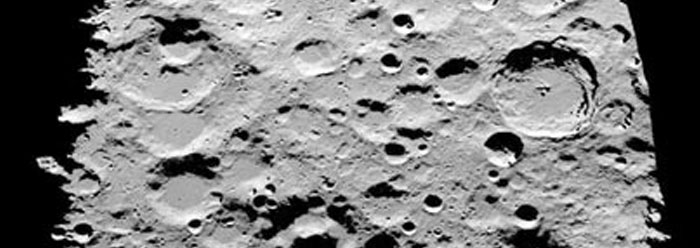Dating methods are like human pyramids; they depend ultimately on the support of the bottom layer. Picture an inverted pyramid. If the bottom guy buckles under pressure, the circus act quickly turns into a dogpile. One widely used technique for estimating ages of planetary surfaces is in similar jeopardy. Its underlying assumption, unquestioned for decades, has recently been found to be seriously flawed.
Crater-count dating seems perfectly logical: the more craters, the older the landscape. It assumes, however, that impactors arrive at a roughly steady rate and produce one crater per hit. After compensating for various complicating factors, like atmospheric density, gravity, and geological activity, scientists had been confident of their time charts -- until recently. New thinking about "secondary craters" has thrown this whole foundation of comparative planetary dating into disarray.
Secondary craters are those formed from the debris of an initial impact. If a sufficiently massive body hits a planet or moon, the debris cloud tossed upward will contain many pieces big enough to fall back and form more craters. Planetologists were not unaware of secondary cratering, but until recently, underestimated its significance. Now they are finding that the vast majority of craters could be secondaries. One writer in Nature estimated that a single large impact on Mars could generate ten million secondaries, and that 95% of the small craters on Europa could be from fallback debris.
Without a way to reliably identify secondary craters, only subjective inferences can be made about the history of a surface. One might suppose secondaries could be identified by proximity to a large crater, or by similar amounts of erosion or space weathering. It's not so simple. Some debris could go into orbit only to fall back centuries later, while other pieces could escape into space to eventually impact other bodies. Fallback debris could also cast dust over the primary craters, obscuring the relationship, or could even toss up more debris to generate additional impacts.
Believing they knew how old the earth-moon system was, and something about its geological history, scientists had plotted crater density on the moon against surface age. They applied this to Mars and other planets and moons, such that any surface could be dated by reference to the lunar standard. A pyramid was thus built on a shaky assumption. Now, awareness of the potential for single impacts to generate vast numbers of secondary craters has yanked the guy on the bottom, bringing the scheme crashing down. Science (May 26, 2006) reported that at a conference last March, "125 planetary scientists deadlocked" over how to apply the method, with many doubting that crater counts have anything to do with telling time. Geological dates inferred from the method could be "off by orders of magnitude."
A brief discussion like this cannot begin to place crater formation within a Biblical timescale. A full creationist model of cratering in the solar system will require much work. There is an important lesson here, though, for all science lovers: question assumptions.
*David F. Coppedge works in the Cassini program at the Jet Propulsion Laboratory.
Cite this article: Coppedge, D. 2007. Crisis in Crater Count Dating. Acts & Facts. 36 (1).













